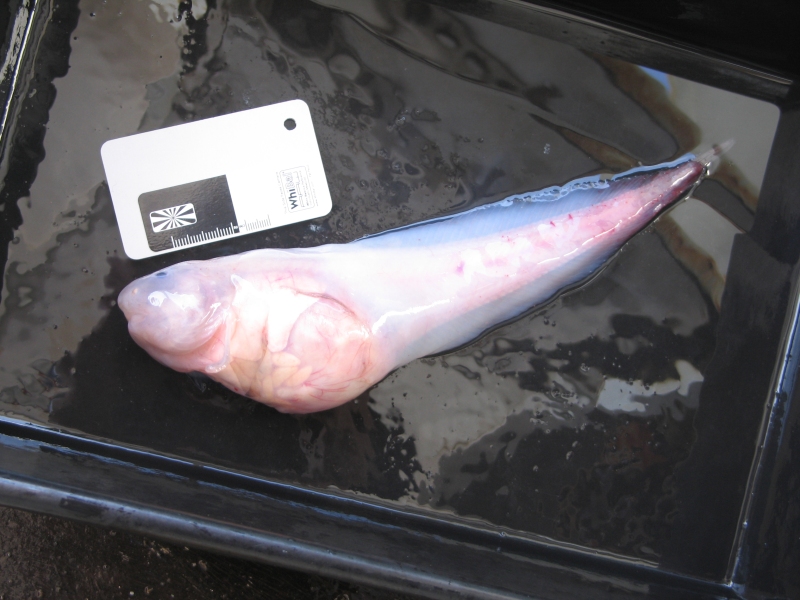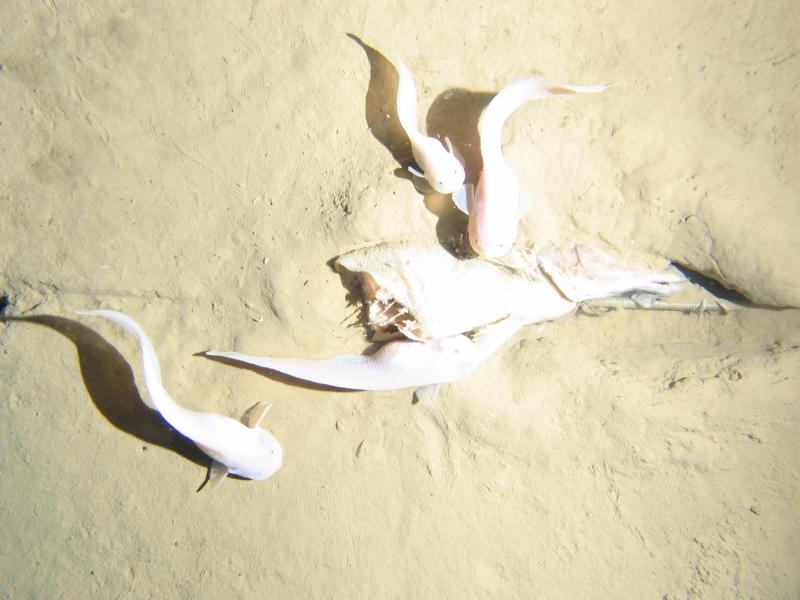Rarely seen fish caught in the Kermadec Trench have enabled scientists to better understand just how deep fish can survive in the ocean.
Five hadal snail fish were caught using specialised equipment at a depth of 7000m and analysed aboard NIWA's research vessel Kaharoa and at its laboratories in Wellington.
It is just the second time this species of fish has been caught, the last being more than 60 years ago. They are also the second deepest fish ever seen alive.
The voyage to the Kermadec Trench to attempt to catch the fish is one of several collaborative trench-related ventures between NIWA and Scotland's University of Aberdeen.
Marine ecologist Dr Ashley Rowden said NIWA was exploring the biodiversity of the Kermadec Trench habitats, which is the only hadal (>6000 m) trench in our Exclusive Economic Zone.
Dr Alan Jamieson from the University of Aberdeen and Paul Yancey from Whitman College in the US wanted to use the voyage to examine the biochemistry of fish living in deep water, particularly their levels of trimethylamine oxide or TMAO, a stabiliser capable of counteracting the effects of pressure at depth. TMAO levels are known to be higher the deeper a fish lives and the team wanted to test whether fish had a physiological limit to the colonisation of the deepest ocean depths.
Measures of TMAO in shallower-dwelling fish had led scientists to predict that fish may be limited to depths of around 8400 m. But no measures of TMAO had been obtained from fish found deeper than 5000 m. Levels of TMAO in the Kermadec snail fish at 7000 m revealed they had the highest recorded TMAO content. When this information was added to the previous data, extrapolations showed the maximum depth a bony fish could survive was 8200m.
This led the scientists to conclude fish cannot live in the deepest 25 per cent of the ocean between 8200m and 11,000m.
The results of this work were this week published in the prestigious US scientific journal Proceedings of the National Academy of Sciences (PNAS). Dr Rowden said the published paper represented a great deal of effort, time and scientific expertise across an international team.
Catching the snail fish was achieved by deploying baited traps. The bait lured in small organisms which in turn attracted the snail fish. Landers were also deployed containing large tripods mounted with cameras. The aim of the landers was to obtain video and still photos of the fish and other trench-dwelling organisms.
While an initial expedition failed to catch any fish, the second was more successful.
"It's pretty tricky at that depth. A lot of effort went into it - we knew that if we caught them as deep as possible it would go a long way to testing the hypothesis," Dr Rowden said.
"Catching five of them also meant we had the physical specimens to confirm their taxonomic characteristics."
While the snail fish were caught at a depth of 7000m, the scientists also observed them at 7500m. In the Japan Trench a species similar to the Kermadec snail fish has been observed at 7800m.



